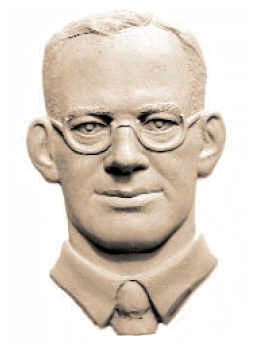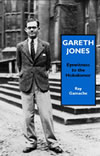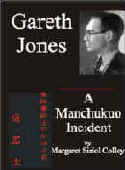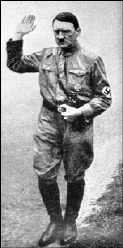Gareth Jones
[bas relief by Oleh Lesiuk]
HOME |
Stop Press |
Complete Soviet Articles & Background Information |
Précis of Gareth's
|
All Published Articles |
BOOKS
|
|
|
|
More Than Grain of Truth(2005) |
|
|
TOPICAL
'Are you Listening NYT?' U.N. Speech - Nov 2009 |
Gareth Recognised at Cambridge - Nov 2009 |
Reporter and the Genocide - Rome, March 2009 |
Order of Freedom Award -Nov 2008 |
Premiere of 'The Living' Documentary Kyiv - Nov 2008 |
Gareth Jones 'Famine' Diaries - Chicago 2008 |
Aberystwyth Memorial Plaque 2006 |
GENERAL
Scholarship Fund |
Site Map |
Links |
Legal Notices |
Sponsored Links |
Contact |
THE WESTERN MAIL
AND SOUTH WALES NEWS, February 15th, 1933
A WELSHMAN LOOKS AT EUROPE (v)
THE ICE BREAKS IN THE MOUNTAINSBy GARETH JONES
A VALLEY IN BOHEMIA.
Last night, as the woodcutter and the toymakers were gathered in the village inn, singing their old folk-songs of the Ore Mountains, a villager dashed in and shouted: “The ice is breaking! The ice is breaking !” All jumped to
their feet and there was a scramble to the door. Then a series of crashes
could be heard outside, as if many large pine trees in the narrow valley had
tumbled to the earth. There was a breaking, grinding noise, to the
continual accompaniment of the roar of a big torrent. I was mystified,
for the stream was so small that it could never make a noise which could so
outrival the Thames or the Severn in flood. So I rushed out with the
woodcutters to the back of the inn, which was situated a few yards from the
river and then I realised why they were excited. The stream had really
swollen into a big river and was carrying along - as one could vaguely see in
the darkness with the help of a torch - huge blocks of ice, which were being
dashed against trees and stones. The water was flooding up to the
court-yard of the inn. Saved - on the Roof
“Danger!
danger!” shouted the innkeeper. “We’ll have to telephone right
down the valley.” The innkeeper’s son rushed to the telephone while
the others still stared at the sudden elevation of their local stream into the
dignity of a real river. One of them said: “There may be bad times
to-night in the next village, because their houses come right down to the
stream. It was madness to build them so close. When the ice broke
last year there were some people who had to climb out on the roof and were only
saved that way.” Someone cried
that we had better see if the bridge were still standing. We went out on
to the village street, which was one mass of ice, and slithered along until we
reached the bridge. Its half-iron, half-wooden structure was still
standing firm, and we stood on it watching the torrent rushing underneath, and
seeing every other moment a large sheet of ice being tossed from one side of the
stream to the other. News then arrived
from the next village. They had been long prepared. People living on
the bank of the river had already been removed to safety, we heard, and beyond
the usual flood no grave results were feared. The children bad all been
wakened and were staring out of the windows at the swiftly-travelling
ice-blocks, and some of the younger ones were terrified by the rumbling and the
crashing in the valley. Disasters of Other Days.
The excitement
soon died down and the villagers returned to their pipes and their gossip. Tales of how the
ice had broken in years gone past were told by the elders. The ice-drifts
of to-day were, in their view, mere bagatelles compared with the disasters which
the ice had brought fifty years ago. There was silence when memories of
lives lost in the floods in the Bohemian mountains were revived. “When that
cloudburst came over Gnats’ Tower and the water was dammed by piles upon piles
of timber,” said a toy maker, “and when the dam suddenly burst and waves
descended on the cottages, bearing huge pine trees and smashing bridges and
drowning people, that was terrible.” When
the morning came the stream had lost its violence, but everywhere there were
blocks and large pieces of ice, tossed into the fields around, on to the road,
into the woods near the bank, and the fir trees near the stream had had their
bark torn by the sharp contact of the on-coming ice. Phenomenon Explained
This phenomenon
was explained by the sudden thaw and the rain which had fallen heavily for
twelve hours. Up to that change in the weather the river had been
completely frozen into masses of ice, and the valley had been covered with snow. When the thaw and
the rain came water had formed in the river and had loosened the ice from the
banks. More and more water formed, and in some parts of the stream was
dammed by the ice masses. Finally the
pressure of the water was so great that the ice blocks were finally loosened
from one another and were driven down stream. The ice often collected into
packs, which collided with the trees and stones and the banks, and caused the
cracking and the crashing which we had heard. Such was the breaking of the ice in this village in Bohemia. |
Adolf Hitler, Chancellor of Germany. |
||||||||
|
|||||||||




